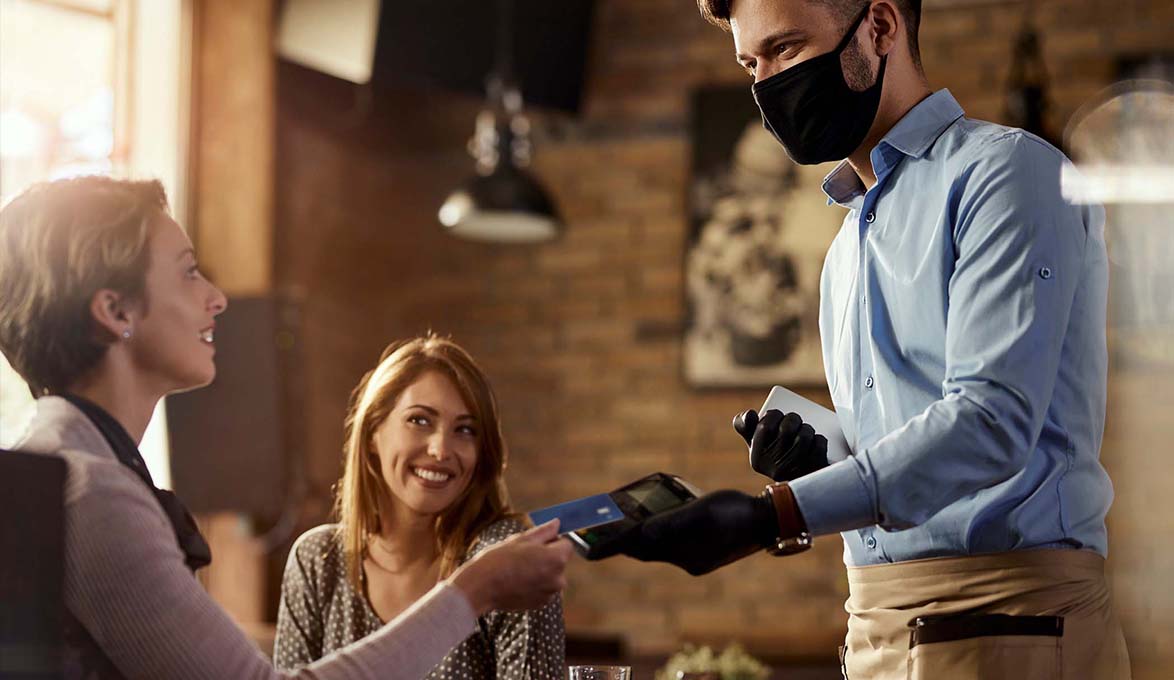Contactless Payment Options for Small Business
1/11/2022

The global COVID-19 pandemic has undoubtedly shifted the way businesses operate.
Establishing permanent work-from-home arrangements, implementing curbside pickup, and offering contactless payment options are just a few of the practices businesses are adopting as we aim to achieve the “new normal.”According to a study conducted by Raydiant, a customer experience management platform, 57% of consumers said they would choose a store with contactless checkout over one without contactless checkout, when all other factors are equal. As we enter into a new year, still very much coping with the challenges of the pandemic, now is the time to set goals and strategize around how you can grow your business in 2024 – and contactless payments might be the perfect place to start.
In this article, we explore contactless payments: what they are, how they work, and the potential benefits your business could see from offering this payment method.
What is a contactless payment?
If you have ever seen someone wave or tap their smart phone to a credit card terminal in a store, you probably witnessed the contactless payment process. No swiping, inserting, or entering a PIN number is necessary.Contactless-enabled cards are the most popular form of contactless payment; however, payments through smart devices (smart phones or watches) using Apple Pay, Google Pay, and QR codes are becoming increasingly popular.
Contactless payments are also called “tap-to-pay” or “tap-to-go” payments. Unlike traditional cards, contactless cards use a secure technology called Near-Field-Communication (NFC). Where traditional cards transmit a consumer’s name, security code, and billing information, contactless payments use a one-time encrypted code sent from the card to the terminal.
Why your business should offer contactless payments
Research shows 41% of consumers would not shop at a store that didn’t offer contactless payment as an option.1 As consumers are transitioning to tap-to-pay, they are discovering the conveniences that come along with it. Contactless payments are generally more secure than traditional card payments, they speed up the transaction process, and they decrease the transmission of germs from one customer to the next, something that’s worrisome to almost 65% of customers.An important aspect of creating a memorable customer experience is ensuring the customer journey is convenient. Customers might get frustrated when they aren’t able to pay you the way they want to, whether that be cash, check, chip and pin, or contactless payment. The last thing you want is a customer to leave your business because you can’t accept their payment. Improving payment options for your customers could improve their overall satisfaction with your business – it’s a win-win situation.
Benefits of accepting contactless payments
If you’re not already accepting contactless payments, what’s holding you back? Integrating a tap-to-pay system can offer your customers and your business an array of benefits. Below, we’ll consider the benefits from both a consumer and a business perspective.Advantages for the consumer:
- Convenience and quicker check out times – Digital payments have taken a lot of the hassle out of paying. Customers no longer have to rummage through their wallet for cash, enter their PIN number, or write a check, which can slow down the checkout process. By simply tapping their contactless card or smart device against the terminal, the transaction is complete within seconds.
- Health and Safety Benefits – In attempt to minimize germ exposure, digital payments are a safer way to go. Card terminals probably aren’t being sanitized between each customer, allowing unwanted germs to transfer from person to person. With contactless payments, consumers only touch their personal phone or card, isolating germs to their own device. Since the terminal is never touched, the likelihood of spreading germs is decreased.
- Security – Contactless payments provide a level of protection that traditional magnetic stripe cards can’t offer. Where traditional cards transmit your customer’s personal information, contactless payments use a one-time encrypted code sent from the card to the terminal. This secure technology makes it extremely difficult for fraudsters to compromise information.
- Loyalty programs and perks – Consumers have a plethora of options when they’re deciding where to shop. A loyalty program could be the reason a customer chooses to patronize your business over another. Many of the loyalty programs offered by retailers are connected with the contactless payment device customers pay with. This makes it easy for the consumer to keep track of their points and redeem rewards – no more losing those loyalty punch cards.
How can my business start accepting contactless payments?
SouthState has several options for merchants who want to improve their payment processing and better serve their customers. Contact a local SouthState Merchant Services Representative to discuss your options.About the Author: Elizabeth Levister, Merchant Services Sales Manager, has 22 years of banking experience. She began her banking career as a teller while in college, and later grew passionate about the Merchant Services industry. During her 15 years with SouthState, Elizabeth has worked on multiple projects developing strategies to take the Merchant Services Department to the next level.
1. source: 22 Contactless Payment Statistics for 2023 (fitsmallbusiness.com)



